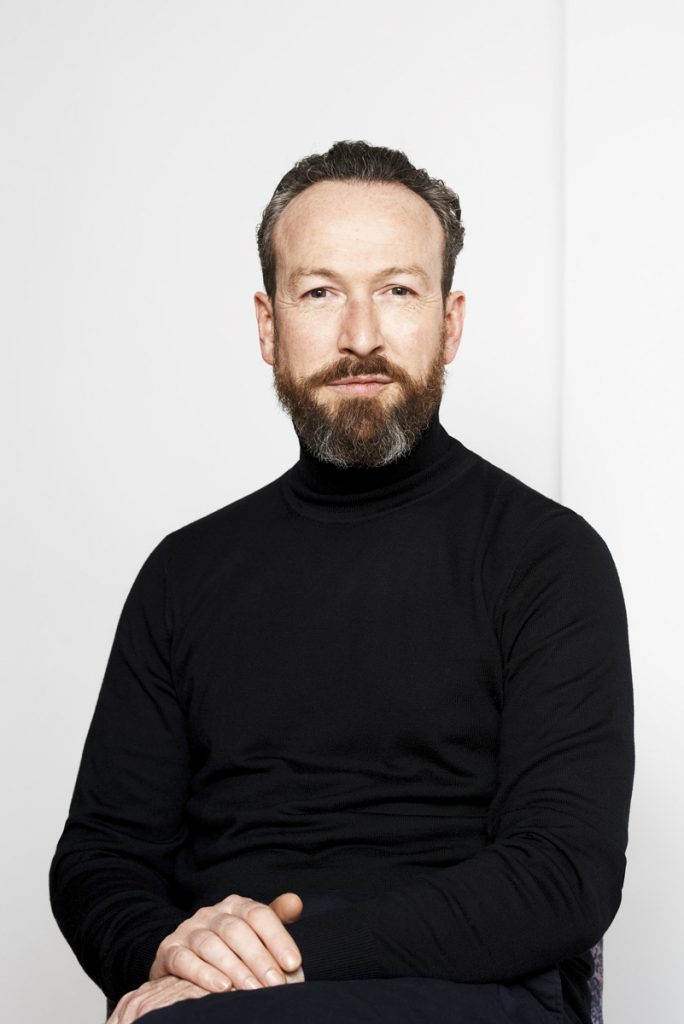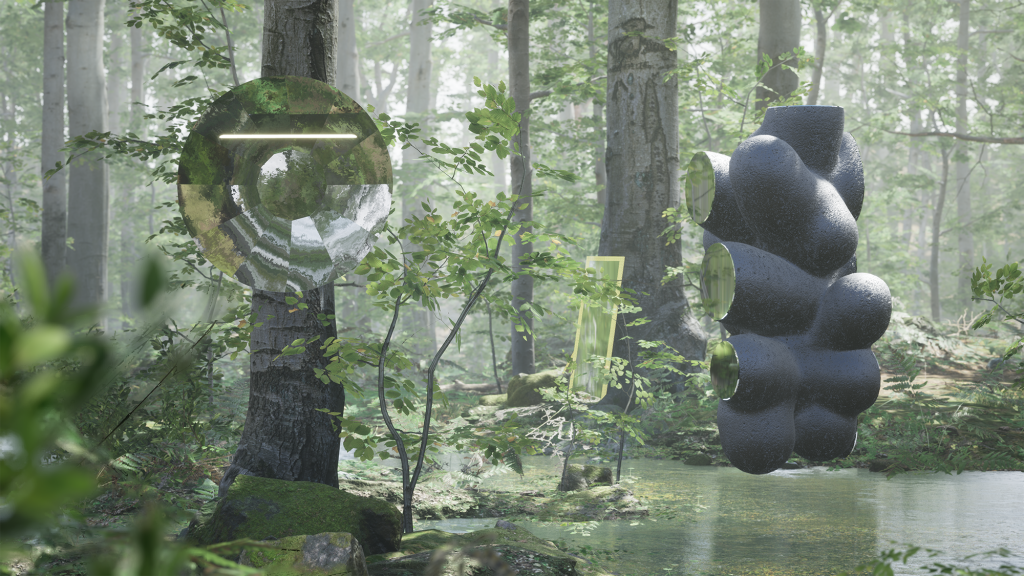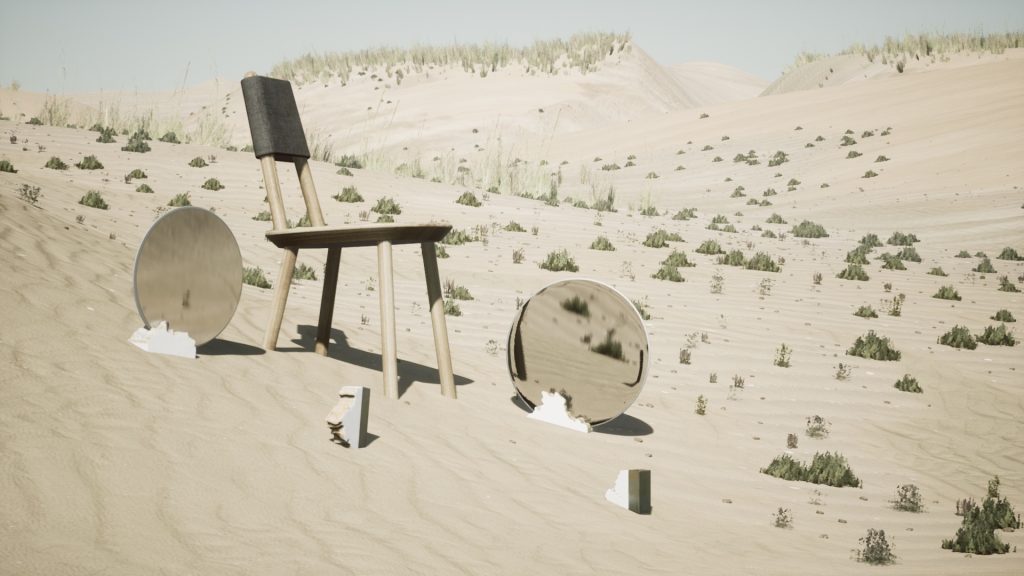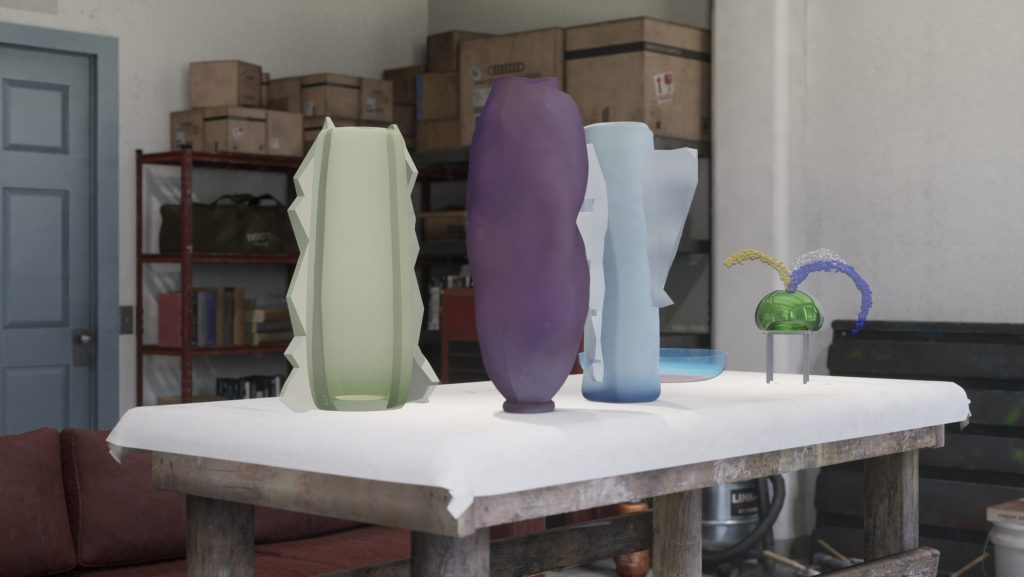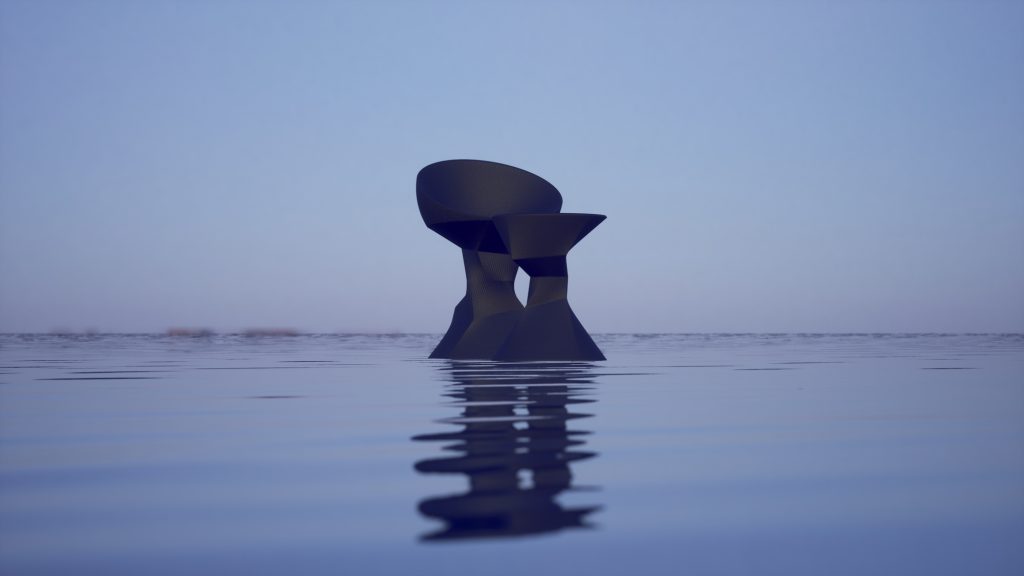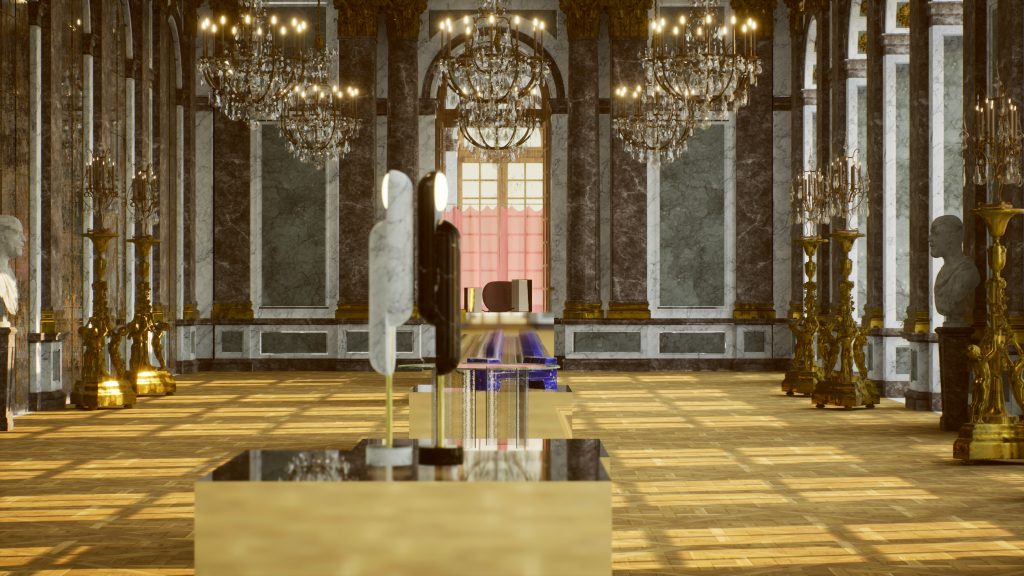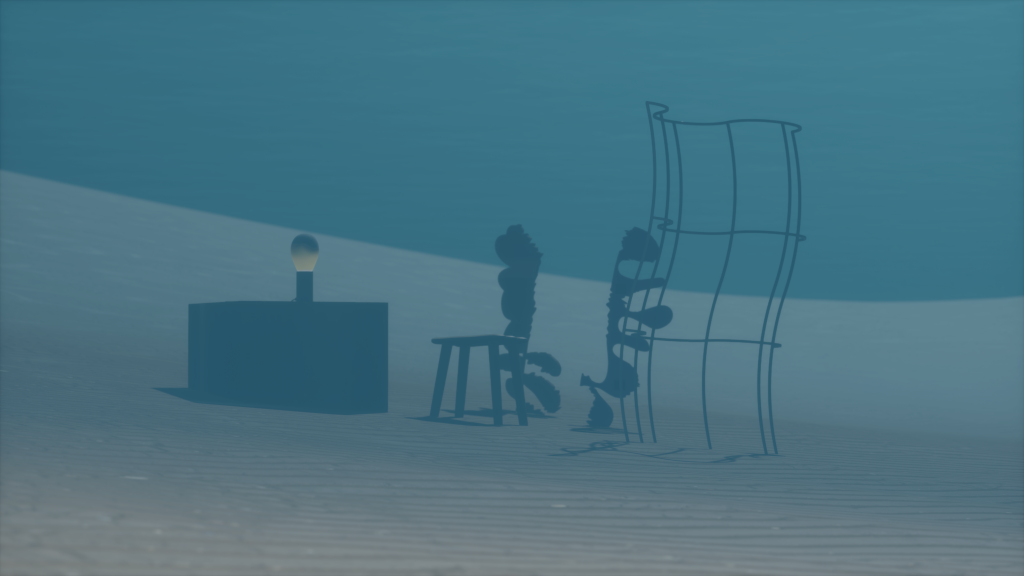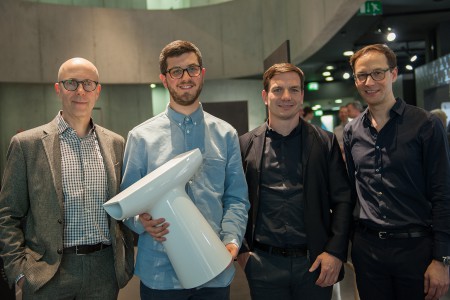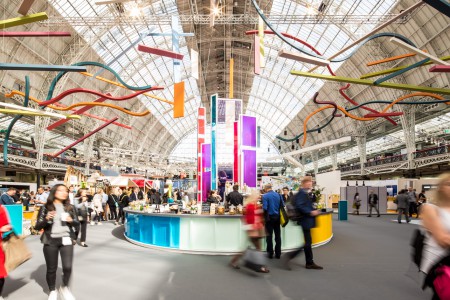“The New Reality” of Design Fairs
TLmag catches up with Jimmy Macdonald, former director of London Design Fair and current partner of Adorno, to learn more about web-born exhibition platforms and the future challenges for both online and digital fairs.
Over the last few decades design-weeks, -fairs and -days have evolved from grassroots organisations to sponsor and material heavy (tourist) attractions. Now, with a global pandemic raging and a looming climate crisis, more and more design professionals are asking themselves if this modus operandi remains a sustainable option. Is it too late for design festivals, or is their forum one that can still be transformed and “updated”? Working with a skilled team of 3D developers and artists, digital-first online gallery Adorno aims to take the term “online exhibition” to the next level through their intricately detailed virtual environments. In their latest experiment, the Virtual Design Destination, fourteen participating countries have been asked to reflect on Adorno’s theme “The New Reality” through specific experiences, thoughts, and themes from the time of lockdown in the curation with local designers and art direction of each of their country collections. TLmag spoke to London Design Fair’s former director, and Adorno’s new Commercial Director and partner, Jimmy Macdonald to learn more about the potential of this digital-first exhibition platform, and the big challenges both physical and virtual fairs have in their future.
TLmag: What did you find the most noticeable difference between working for this digitally native platform versus the very physical manifestation of the London Design Fair?
JM: Well, first of all, with a fair we only get one moment a year to present what we’ve been working towards. With Adorno, that moment can be every day. There’s this relief of not having a once a year deadline to produce a fabulous show, or to reach a specific group of people. Now, with a digital audience, we have the chance to reach them with new content whenever we want. On top of that, we realised that a large portion of the design festival’s digital audience were avid followers – but would probably not be able to attend. How much more interesting can it be to get them to be involved in this? Suddenly, we could reach around half a million of the festival audience and a quarter of a million of our own audience and, wow, that’s quite a revelation. That’s quite a great opportunity for those designers that we’re representing.
TLmag: Some people might say that the craftsmanship and craft that is highlighted in physical fairs can kind of be lost in translation when it’s being put into online spaces. How do you see that?
JM: Yes. I mean, that is extremely true. In a normal year, we would have had a physical exhibition, and a virtual exhibition. Those physical touchpoints with Adorno and the type of content that we seek out will become a sort of merger of the physical and the virtual realities that take place within our audience — enabling them to make the leap from one to the other. Although we are getting pretty close with the quality of the sort of production that we have, we’re aware that we’ll never be able to sort of smell the wood of a sculpture or feel the sandy touch of a certain ceramic. But then again, when will you be able to travel to Mexico to see these pieces anytime soon?
TLmag: What does a platform like Adorno get “right” that you think other institutional online platforms or experiments are lacking in?
JM: We know that we’re not the first to do virtual exhibitions or virtual design tours. But we definitely noticed that many platforms who are doing these tend to mimic the physical spaces that design fairs usually take place in, e.g. virtual 3D tours that replicate the institution’s, or gallery’s setting. We couldn’t understand why they were constraining themselves to physical parameters when they’re in a virtual context. So, in our platform, we gave the designers and curators we worked with an open brief to imagine any space they’d like – and were quite happy when the result came back that most of them decided to go for these radically outdoorsy environments. The overall theme for our latest exhibition is “New Reality”, and so that’s exactly what we tried to emulate. These spaces now reflect more on their topic in relation to the theme than it has any constraints around a physical environment.
TLmag: That brings me to my next question about the theme of this latest exhibition, a “New Reality”. Am I correct in assuming it’s not meant as a replacement of the “Old Reality”, but as an additional layer? Is that the challenge you think large trade fairs will have to engage with?
JM: COVID-19 has revealed a massive chasm in the business plan of trade fairs. Like I said before, trade fairs have clearly been super non-technical and digitally ill-equipped for COVID in a huge way, right. There are third party e-commerce platforms, like Architectonic, who have been sitting on one side doing everything digitally, while the huge trade fairs been sitting on the other side focusing solely on the physical. Where trade fairs bring in a large and a very targeted group of people, e-commerce platforms feel way too huge and impersonal: who wants to see 700 isolated chairs in a row? Nobody, and you can see that in the level of engagement that they bring in. The financial system between fairs, gallery’s, curators and designers is a very fragile one, and the only time everybody benefits are when people engage with the work and it gets sold. The existing fairs aren’t necessarily the perfect environment, because you can’t guarantee that the right collectors and interior designers and architects can attend — we’re hoping that with Adorno London this can be something we can provide. Everything that we’re doing now already kind of existed before; it just hadn’t been brought together yet. It’s always been online content on one side of the fair, and physical exhibitions and experiences on the other side. By producing the virtual design destination, we’ve accelerated the growth of bringing those two things together.
TLmag: I think there’s also another kind of craftsmanship and physical labour involved in digital exhibition-making as well. Could you walk us through the logistics of 3D modelling the objects and creating the virtual set design?
JM: This year pushed us in every possible direction. When we decided to go completely virtual, this also meant that we had to 3D model literally everything. Because this is our first time arranging this, we hadn’t thought of building in time-slots for pieces to be shipped from location to location. What we came up with as a solution was a sort of hybrid model: each designer had to take about 60 images of each of their pieces, with instructions from every angle. We have about 120 designers in this exhibition, with some presenting two or three pieces each, so you can imagine that we had to deal with a lot of images. Literally thousands of hours of modelling went into the virtual manifestation of this show, and many of the pieces are incredibly complicated and intricately designed. It’s almost as though the 3D renders (that were done in Milan) are actually a completely new version of these designs that were made from (photo) scratch. This also brought with it it’s own problems – we had to ask ourselves if we could afford to spend 100 hours on one product, or had to choose another.
TLmag: The virtual environments Adorno created almost seem like they came out of a video game…
JM: What you’re seeing now is our platform’s first try and integrating game design with the collectable design environment. We partnered up with [pixel streaming platform] Furioos to provide real-time rendering from any browser or VR headset, so visitors can navigate around the immersive environments that were created to experience the collections that have all been modelled in 3D. There are a few elements that we’re incredibly happy with, like the specific sounds that you hear when you enter a certain exhibition. There’s also an element in the bottom right corner of the screen where visitors can see who else is online – where we’ll hopefully introduce more social features too. We’ve been having very interesting conversations about how far “into the woods” we should allow our visitors to go because that model is quite endless. Perhaps we’ll make it so that we could kind of “walk” for days on end, or introduce other ways of manoeuvring through the different spaces. I’m looking forward to what comes next.
Virtual Design Destination was created by Adorno to present curated collectable design during the London Design Festival (from September 12th to September 20th, 2020) and features more than one-hundred independent designers from fourteen countries. You can still view the works and separate destinations online at www.virtualdesigndestination.com
Cover Photo: Virtual Design Destination, Exhibition Still, Belgium. Curated By: Elien Haentjens. Designers: Amandine David / Nicolas Erauw / Haute Cuisine / Filip Janssens / Chanel Kapitanj /Roxane Lahidji / Geneviève Levivier / Objects With Narratives / Pierre-Emmanuel Vandeputte.
